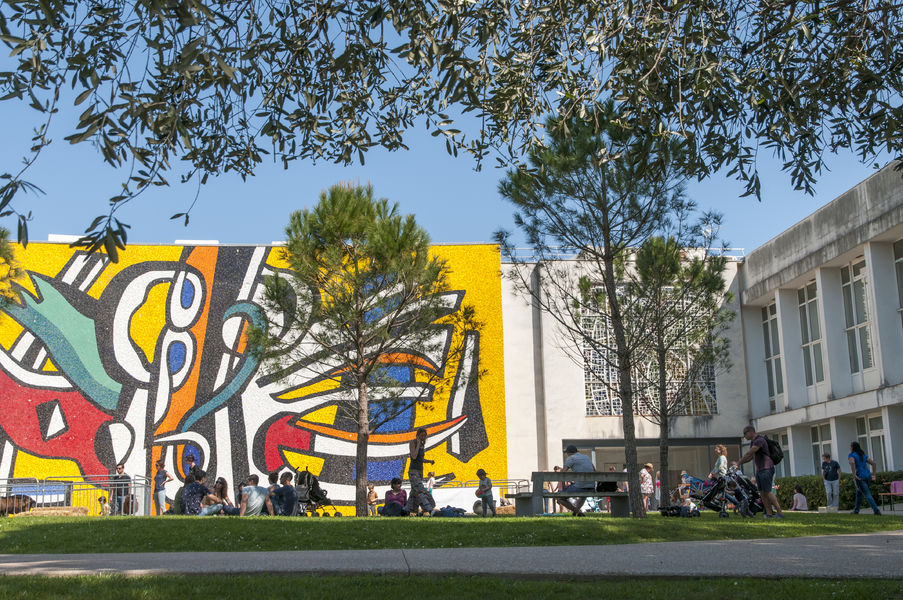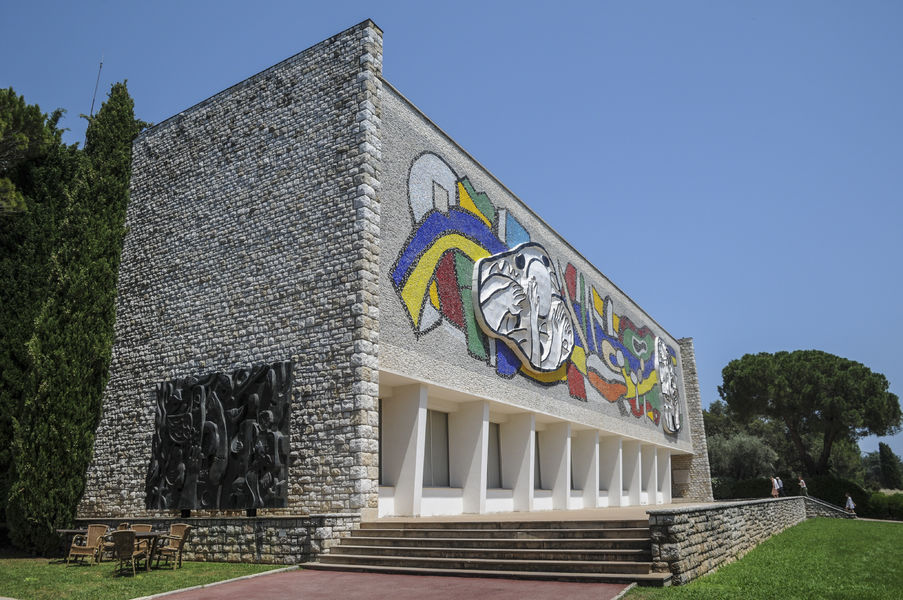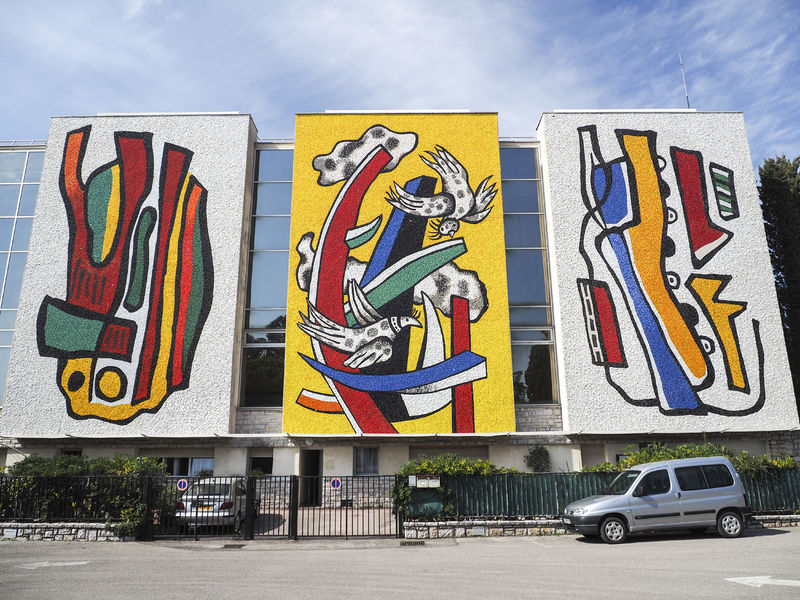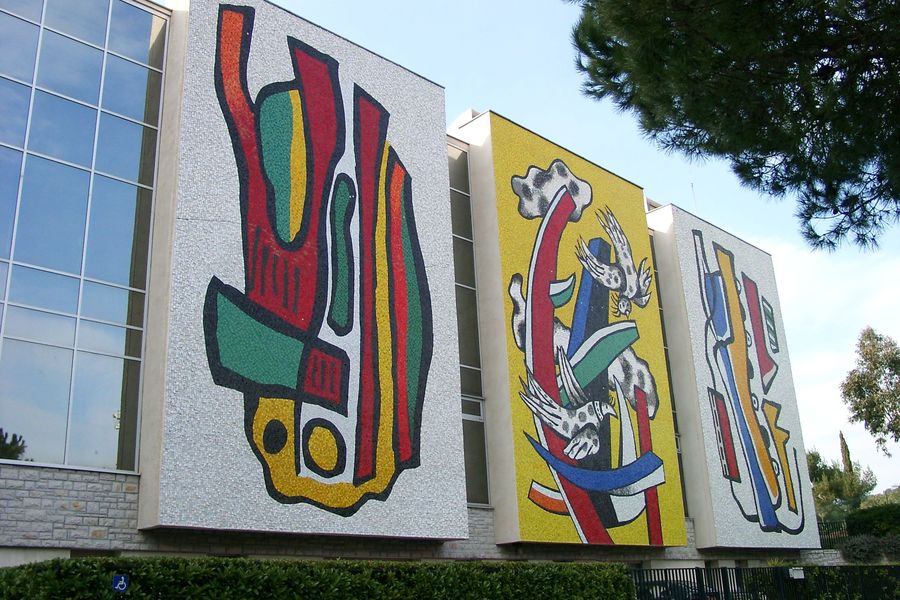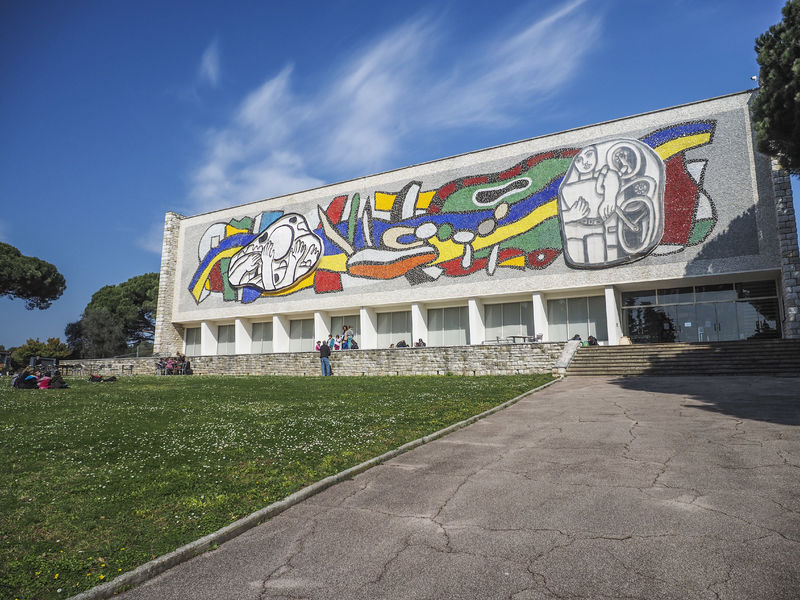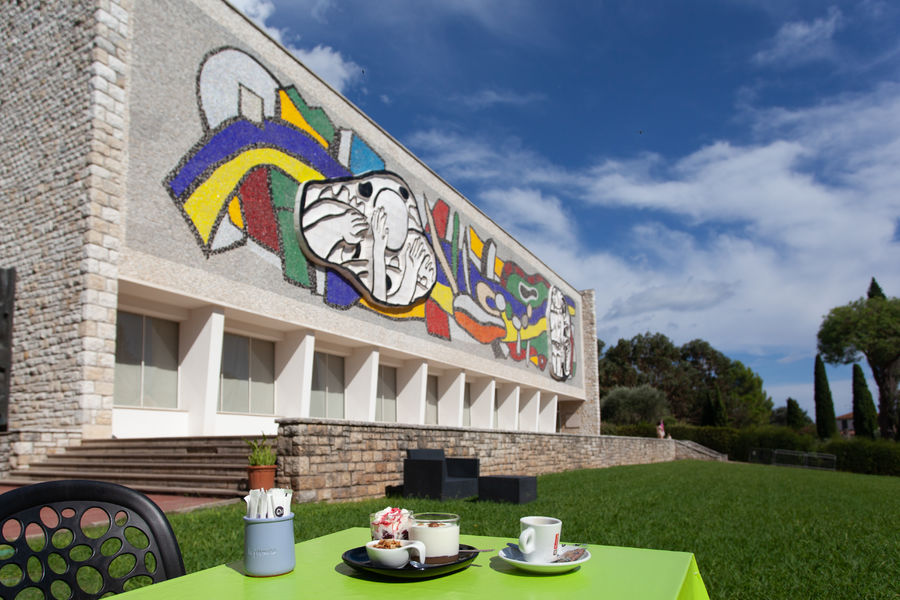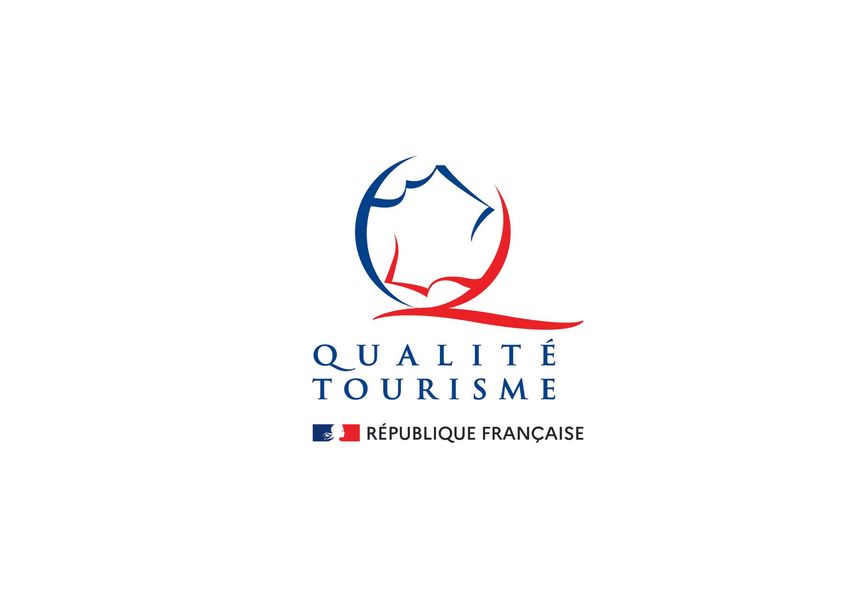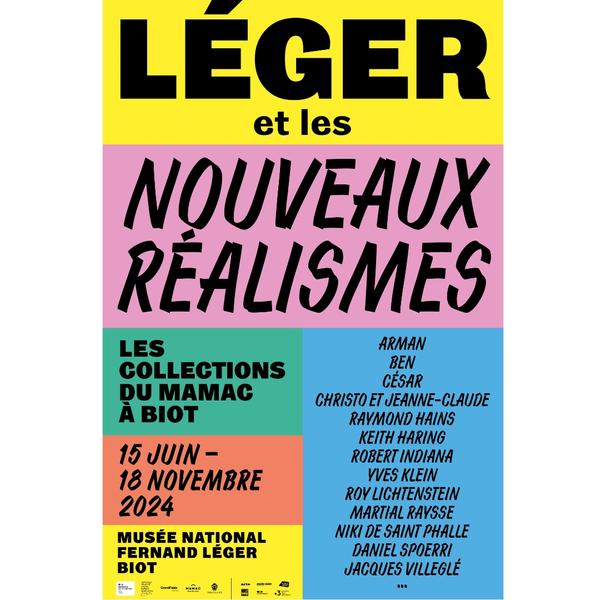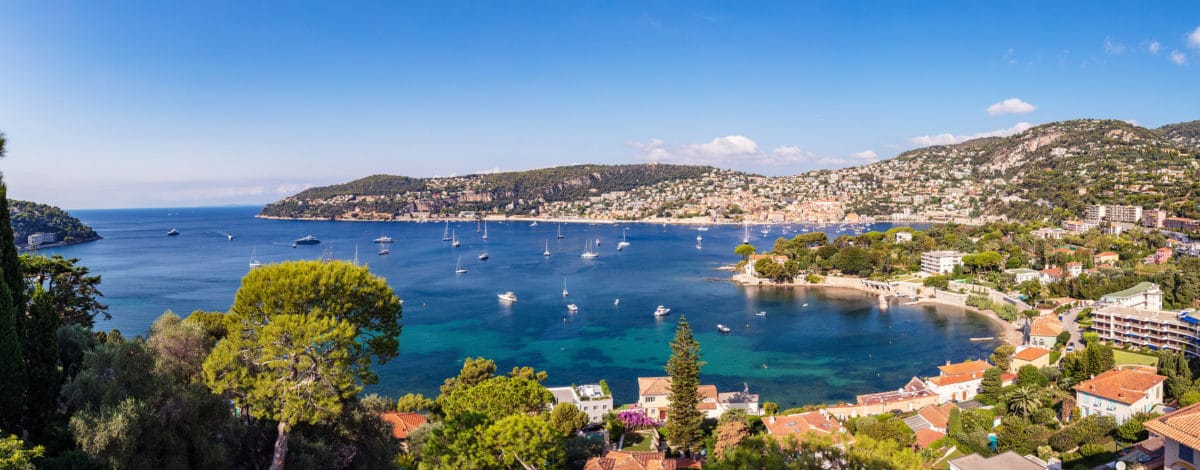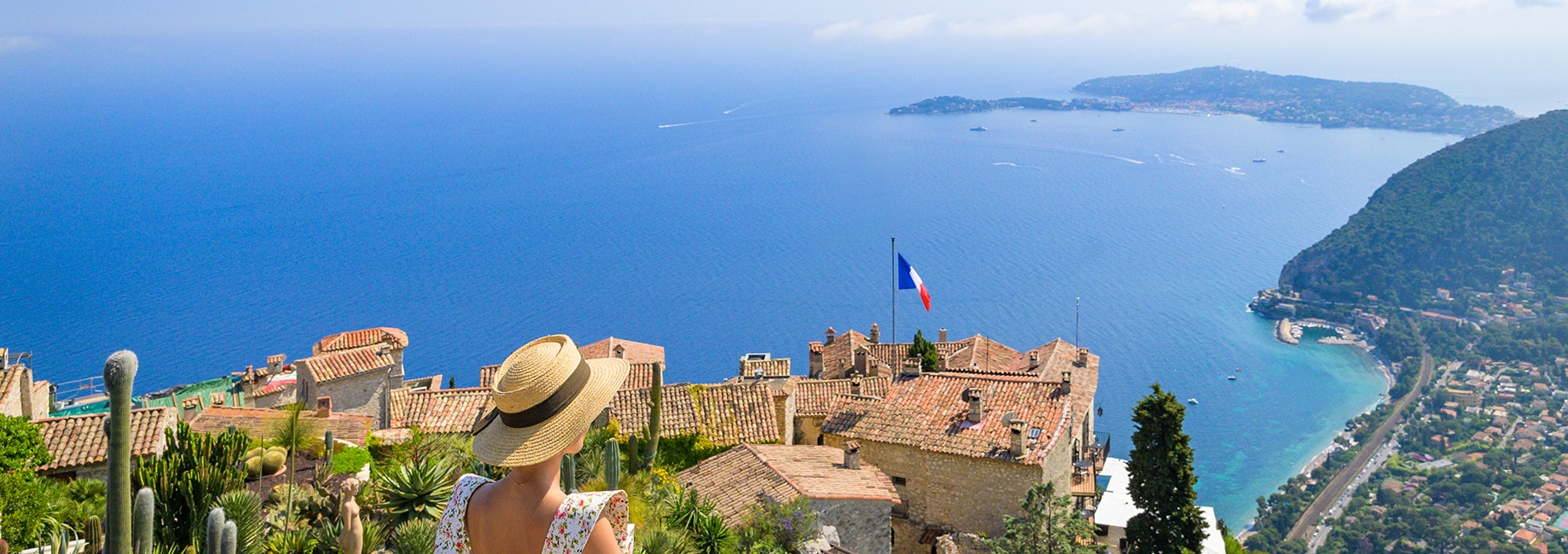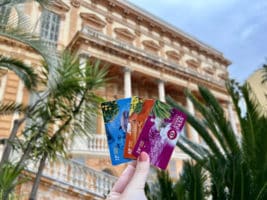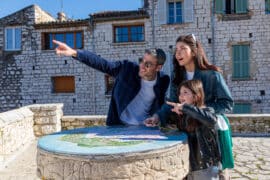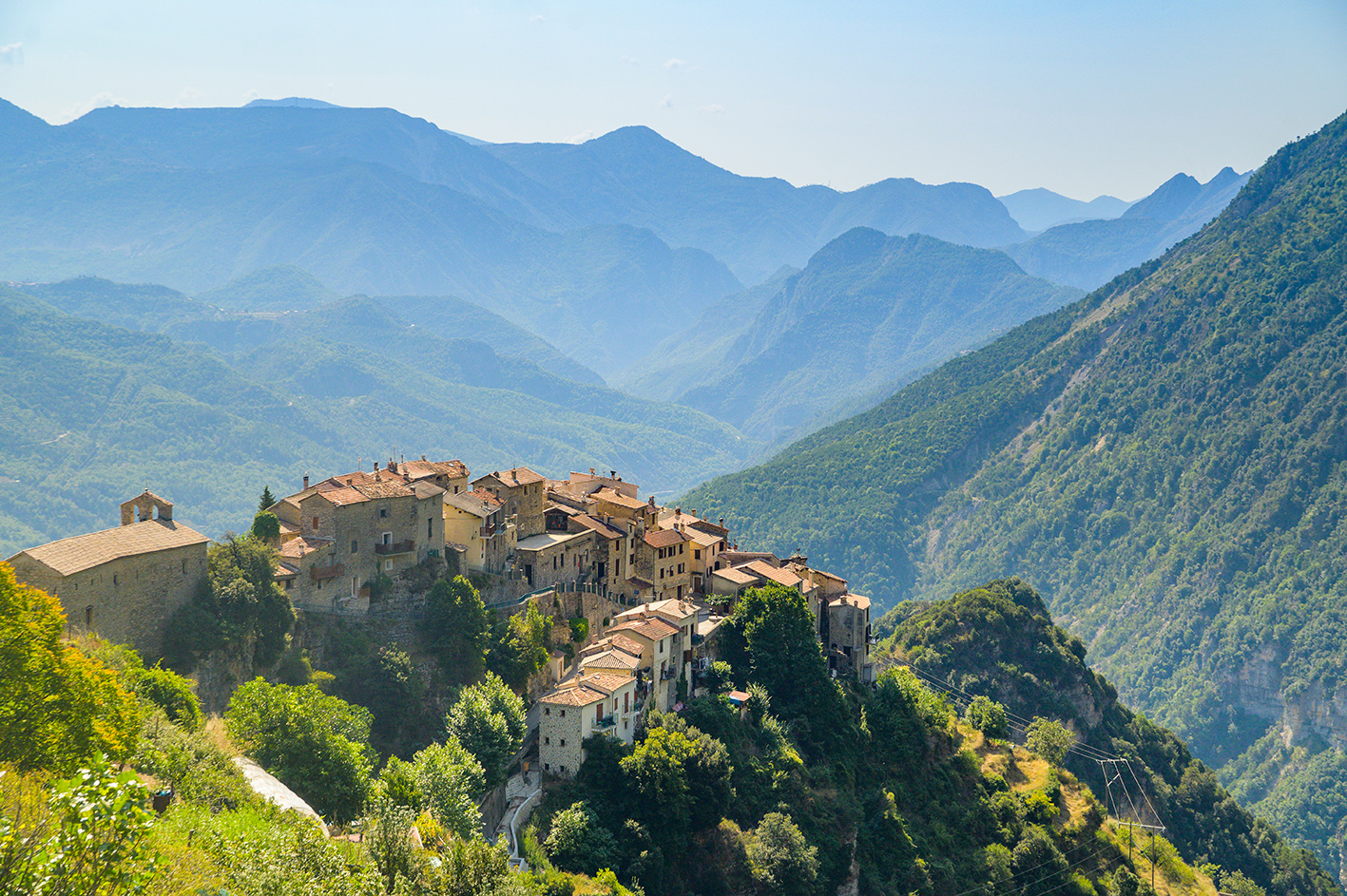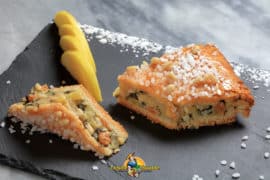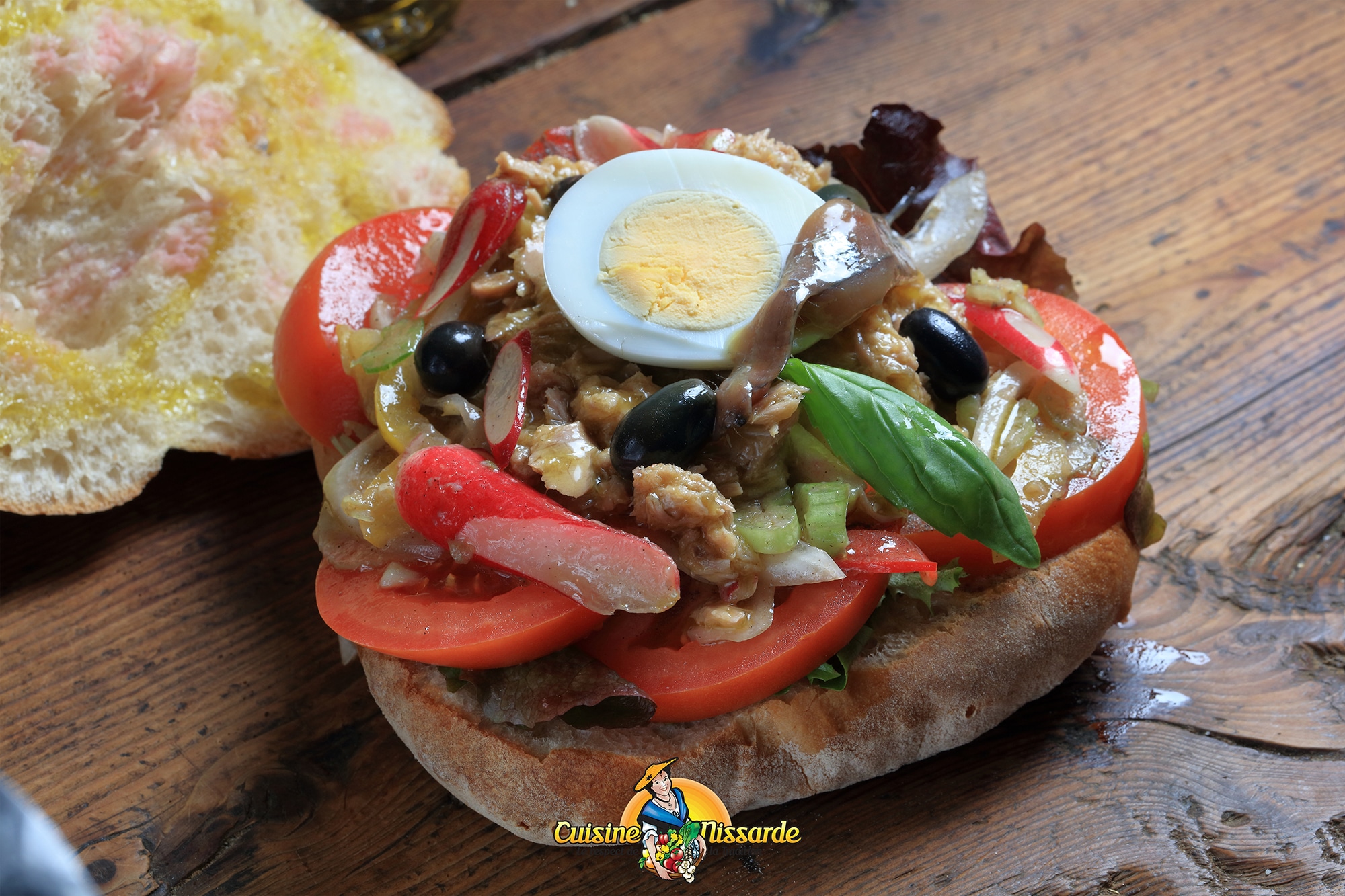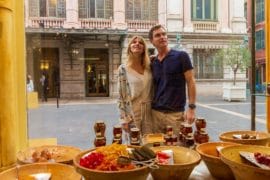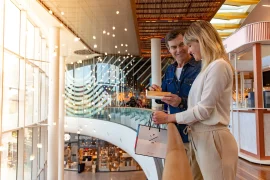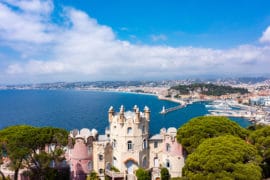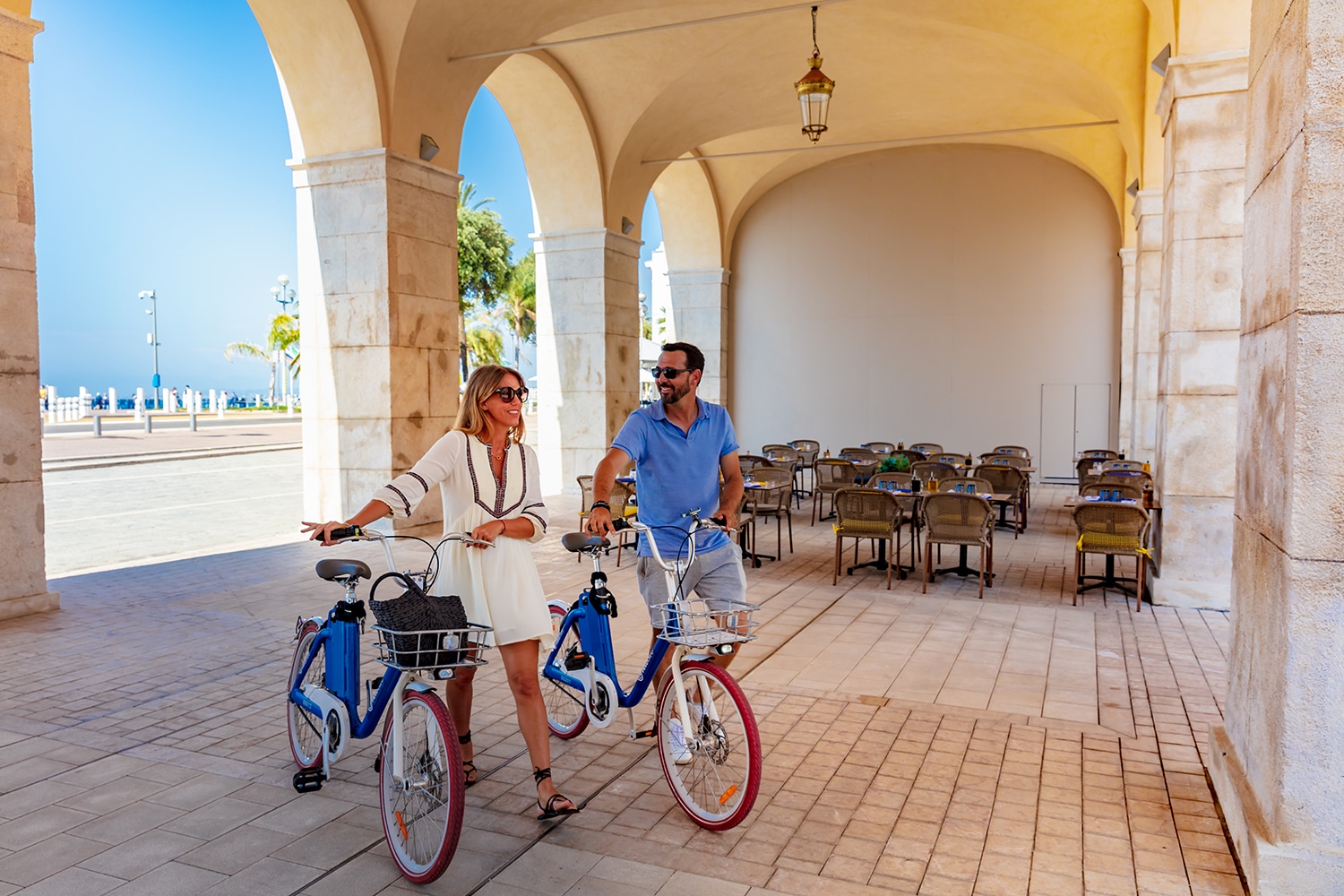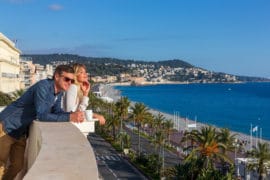Establishment labeled quality tourism, the Fernand Léger National Museum is the only museum in the world dedicated to Fernand Léger, a major artist of the 20th century, who lived and worked in Biot.
A few months before his death, in 1955, Fernand Léger bought a villa, the Mas Saint André, located at the foot of the village of Biot on a horticultural ground. The painter settled at the time on the French Riviera to follow the manufacture of his ceramics.
It is on this ground that Nadia Léger, his widow, and Georges Bauquier, his close collaborator, decide to create a museum to pay homage to him and to promote the knowledge of his work. The founders join forces to finance and coordinate the entire building project, designed by architect André Svetchine. The park is entrusted to landscape architect Henri Fisch. The building project incorporates an immense mosaic originally planned by Léger for the decoration of the Hanover stadium, but never realized. The architect uses the dimensions of this project to calculate the proportions of this signal building, totally dedicated to the monumental work.
1960, the creation of the museum
On the evening of May 13, 1960, an exceptional event inaugurates the Fernand Léger museum in Biot. More than five thousand guests flock to the opening of the first monographic museum in the region. Under the patronage of Picasso, Braque and Chagall, the inauguration brings together celebrities from the literary and artistic world, film stars and political representatives. The Fernand Léger Museum marks with its seal the cultural landscape of the time.
Not far from Biot, other projects devoted to the great figures of modern art materialize soon after: in Saint Paul, the Foundation Maeght in 1964 and in Nice the Marc Chagall museum in 1969.
1969, the donation to the State
In 1969, the founders donated the building to the French State, but also the land and a rich collection of more than three hundred works. André Malraux, Ministre d’État chargé des affaires culturelles (Minister in charge of culture), receives the donation during an official event which ends with a gala organized at the Palais des Festivals de Cannes. The Léger museum becomes a national museum and according to the clauses of the donation, the founders remain directors for life.
1987-1990, the extension of the building
In 1987, the museum was enlarged and studied and built by the Ministère de la Culture by architect Bernard Schoebel. A new building wing doubles the exhibition area. On the east and west facades of the new building, Georges Bauquier commissioned Heidi Melano to make monumental mosaics based on Léger's plans for La Triennale di Milano (1951) and for the decoration of the University of Caracas (1954).
Georges Bauquier retired as director in 1994.
2004-2008, the modernization of spaces
Renovation works began in 2004. The architect Marc Barani is in charge of the work to restructure the exhibition spaces and improve the reception of the public. The furniture is entrusted to Eric Benqué and the garden landscaping Philippe Déliau. This new layout allows a better presentation of the permanent collection. In a chronological clash rich in masterpieces, the visitor travels the whole life of Fernand Léger.
© musées nationaux du XXe siècle des Alpes-Maritimes / Gilles Ehrentrant © ADAGP, Paris, 2022
-
Offre FamilleWorkshops for children and families on Wednesday afternoons (during term-time) and school holidays.


Furniture
- Auditorium
- Bar
- Book shop
Services
- Shop
Adapted tourism
- Accessible for self-propelled wheelchairs
- Reception staff sensitized to the reception of people with disabilities
Reception of animals
- Pets welcome : Dogs on a leash
Pricing
Free entry for children 10 people.
Full price: 5,50 € to 6,50 €
Free - Under 26
Group rate - per person: 5 €
Reduced price from 4 € to 6 €.
Accepted payment methods
- Bank checks
- Cash
- Credit card payment
- Holiday vouchers
Opening periods
Open every day between 10 am and 5 pm.
Except on Tuesday.
10 am to 6 pm from April to October.

